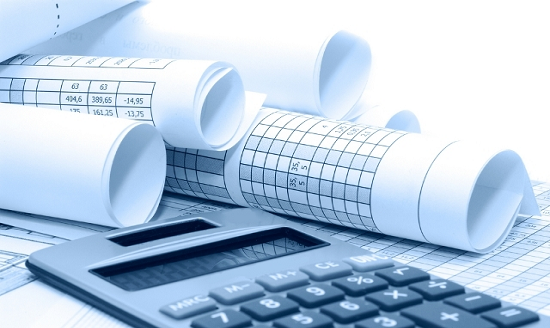What are the regulations on accounting books of administrative and non-business units in Vietnam? - Bich Tram (Long An, Vietnam)

Regulations on accounting books of administrative and non-business units in Vietnam (Internet image)
1. Requirements for accounting books in Vietnam
According to Clauses 1, 2, 3 and 4, Article 24 of the Law on Accounting 2015, the requirements for accounting books in Vietnam are as follows:
- Accounting books are used for recording economic/financial transactions that occurred and are related to the accounting unit.
- Each accounting book must specify the name of the accounting unit; name, opening date, closing date of the book; signature of the book maker, chief accountant, legal representative of the accounting unit, page numbers, and overlapping seals.
- Each accounting book must have:
+ Date of each entry;
+ Numbers and dates of accounting records that serve as the basis for making the entries;
+ Summary of economic/financial transactions that occurred;
+ Amount of money of economic/financial transactions recorded in the accounts;
+ Opening balance, transactions that occur during the period, and closing balance.
- Accounting books include the general accounting book and detailed accounting books.
2. Regulations on accounting books of administrative and non-business units in Vietnam
Regulations on accounting books of administrative and non-business units in Vietnam according to Article 5 of Circular 107/2017/TT-BTC are as follows:
* The public sector entity must set up accounting books to record, systematize, and keep all accrual economic events in connection with accounting unit. The accounting book shall be kept in accordance with laws and regulations on accounting, relevant documents and Circular 107/2017/TT-BTC.
* Any public sector entity receiving and using fund financed by state budget; foreign aid or loans; fund of which a given amount is deducted or withheld must set up accounting books for separate monitoring according to state budget entries and other requirements with the purpose of making budget final accounts and competent authorities.
* Types of accounting books
- Each accounting unit only uses an accounting book system for a fiscal year, including general accounting books and detailed accounting books.
Depending on types of accounting, the unit shall set up general ledgers or detailed ledgers and use them in accordance with regulations on contents, procedures, and method of recording.
Accounting books of state budget and fund of which a given amount is deducted or withheld according to state budget entries are used to monitor them.
Accounting books that are used for monitoring the receipt and use of foreign aid and loans according to state budget entries serve as basis for preparation of final accounts as prescribed in Circular 107/2017/TT-BTC and at the request of donors.
- Form of general accounting book:
+ Journal to be used for recording accrual economic events presented in chronological order. In necessary case, it is possible to combine the recording in chronological order and classification of accrual economic events. Figures in journal must reflect total accrual economic events in an accounting period.
+ General ledger is used for recording economic events accruing by economic events (accounts). In the general ledger, it is possible to combine the recording in chronological order and accrual economic events. Figures in the general ledger reflect assets, budget and use of budget.
- Template of detailed accounting books and cards:
Detailed accounting books and cards are used to record accrual economic events relating to accounting subjects at the management requirements that general ledger has not reflected them specifically. Figures in the detailed ledger give specific information to serve internal management and create items in financial statements and budget final accounts.
According to requirements for management and accounting of each specific accounting subject, the entity is entitled to add extra items (columns and rows) in the detailed accounting books and cards to make financial statement and final accounts
* Responsibilities of persons keeping and recording accounting books
- Accounting books must be managed closely and assigned to an accountant with specific responsibilities for keeping and recording them. The assigned accountant must take responsibility whilst he/she keeps and record the accounting book.
- When the accountant who is keeping and recording the accounting book is replaced, the chief accountant or accountant in charge must assign responsibilities to new accountant. The former accountant must take responsibility for the period over which he/she kept and recorded the accounting book, and the latter accountant must take responsibility from the date of handover. The handover note must be certified by chief accountant or accountant in charge.
- The accounting book must be recorded promptly, clearly, and sufficiently according to items therein. Information and figures recorded in the accounting book must be accurate, truthful, and conformable with respective accounting vouchers.
- The accounting book must be recorded in chronological order of accrual economic events. The information and figures in the accounting book of the subsequent year must succeed those in the preceding year to ensure the continuity from the setting up to closing of book.
* Setting up accounting books
- Rules for setting up accounting books
An accounting book must be set up at the opening of accounting period or as soon as practicable after receiving establishment decision of accounting unit.
The accounting book must be set up at the beginning of fiscal year to transfer balance from the accounting book of the preceding year and record accrual economic events of the new fiscal year from January 1.
Figures in accounting books of receipt and use of state budget after December 31 shall be carried over from this year to preceding year for continuous monitoring of figures arising out during the adjustment period to serve the making of final accounts as prescribed.
The entity may set up detailed ledgers as its needs.
- Manual setting up of accounting books:
The accounting unit must complete the legal procedures for accounting book as follows:
+ For accounting book in bound book form:
++ Cover’s left corner must bear accounting unit’s name, cover’s middle must bear book’s name, dates of setting up and closing book, full name and signature of the person setting up the book, signatures and seals of chief accountant or accountant in charge and unit head; dates of closing or transferring book.
++ Pages of accounting book must be numbered from 1 to the last page, any two pages must bear fan stamping of the accounting unit.
++ The accounting book is not considered legitimate until all above conditions are met.
+ For accounting book in separate sheet form:
++ Cover’s page must bear unit’s name, page number, book’s name, month of use, full name of accountant who is keeping and recording the accounting book.
++ Separate-sheet book must bear signature and seal of the unit head and be registered before being used.
++ Separate-sheet book must be arranged in the account order and kept in a safe and easily seen place.
- Electronic accounting books:
The electronic accounting book must contain elements of an accounting book in accordance with laws and regulations on accounting. If the accounting book is kept in the electronic device, a printed and bound general ledger is still required and all procedures prescribed in Point b, Clause 5 of Article 5 of Circular 107/2017/TT-BTC must be completed.
If remaining accounting books are be printed but kept in electronic devices, the head of accounting unit must ensure that data must be safe, secured and accessible during the keeping period.
* Recording accounting books
- An accounting book is recorded according to respective accounting vouchers, all figures present in the accounting book must be justified by corresponding accounting vouchers;
Numbers and letter must be written clearly, continuously, and systematically; no abbreviations, interlineations, or spacing out lines are allowed.
- If the book is recorded manually, indelible ink must be used, no red ink is allowed. Procedures for recording and forms of accounting books must be done in accordance with Appendix 03.
When all pages are fully written, figures of each page must be sum up and the total must be carried over to the top of the succeeding page, no interlineations on the top or bottom of current page is allowed. If a page is not fully written, blank section must be crossed out; no erasures or no chemicals intended for correction are allowed.
* Closing accounting books
Closing accounting book means calculation to determine total accrual debits, total accrual credits, and closing balance of each account, or total revenue, expenditure, fund balance, receipt, discharge, and inventory.
- Time for closing
+ A cash fund book must be closed at the end of each day. After closing the book, it must make reconciliation between the cash book of the accountant, the cashier's cashbook and the cash in the safe to ensure they are accurate and matched. On the last day of the month, a cash inventory statement must be drawn up. After the inventory, the cash inventory statement shall be kept together with the cash accounting book on the last day of the month.
+ A bank/treasury deposit book must be closed at the end of the month for reconciliation purpose; the reconciliation table (certified by the bank/treasury) shall be kept together with monthly bank/treasury deposit book.
+ The accounting unit must close the accounting book at the end of the fiscal year before financial statement is made.
+ In addition, the accounting unit must close the accounting book in case of stocktaking/making an inventory on an ad-hoc basis or in other cases as per the law.
- Procedures for closing accounting books
(1) For manual bookkeeping:
Step 1: Make a check and reconciliation before closing accounting book
- At the end of accounting period, after accrual accounting vouchers during the period are all recorded to the accounting book, a reconciliation between figures in accounting vouchers (if necessary) and those in the book, or between books is required to ensure matching figures. Total amounts accruing in the general ledger and detailed ledgers.
- Make a grand table of accounts recorded in multiple books or multiple pages from detailed accounting books and cards.
- Total accrual debits and accrual credits of accounts in the general ledger or journal-general ledger to ensure that the figures are matched and equal to accrual amount Then reconcile figures in general ledger and those in detailed ledger or grand table, between figures of accountant and those of cashier or storekeeper. The accounting book shall be closed when the matching figures are assured. If there is any difference, the reason shall be determined and the difference shall be reconciled until they are matched.
Step 2: Closing book
- When closing book, draw a line under the last transaction line of the accounting period. Then write “total accrual amount in the month” below the said line;
- Keep writing “closing balance” (month, quarter, and year);
- Keep writing “total accrual amount from the previous months” from the beginning of the quarter;
- Keep writing “total accrual amount from the beginning of the year";
“Closing balance” is calculated as follows:
Debit balance at the end of the period
|
Closing debit balance |
+ |
Opening debit balance |
+ |
Accrual debit |
- |
Accrual credit |
|
Closing credit balance |
+ |
Opening credit balance |
+ |
Accrual credit |
- |
Accrual debi |
After calculating the balance of each account, the account shall be written in the Debit column or Credit column, whichever is greater.
- Finally, draw two straight lines to end the closing.
- If a detailed accounting book contains accrual debit column, accrual credit column, and a “balance” column (or receipt, discharge, “balance” or revenue, expense, “balance”, etc.), the figures in the balance column shall be written in the line “Closing balance” off the “Balance” column. After closing the accounting book, the bookkeeper must sign under the 2 lines, and then the chief accountant or person in charge will countersign after checking for accuracy and balance. And then refer it to the unit head for inspection and approval for legal status of figures
(2) For computerized bookkeeping:
Process of closing accounting book in accounting software must be built in such a manner that it satisfies rules for closing book applied to manual bookkeeping.
* Modification of accounting book
- Method of modifying accounting book: In accordance with Clause 1 or Clause 4 Article 27 of the Law on Accounting 2015.
- Modifying accounting book in a fiscal year
Regarding entries that are recorded in fiscal year N, in case of misstatements or upon requests of a competent authority, the figures shall be modified as follows:
(1) From January 1 of year N to December 31 of year N:
From January 1 of year N to December 31 of year N, the accountant shall modify the accounting book of current year using the method prescribed in sub-point a Clause 8 of Article 5 of Circular 107/2017/TT-BTC.
Regarding entries in conjunction with budget final accounts, corresponding items in detailed ledger will also be modified in accordance with modified entries.
(2) From January 1 of year N+1 to the submission of financial statement to competent authority:
From January 1 of year N+1 to the submission of financial statement to competent authority, the accountant shall modify the accounting book of reporting year using the method prescribed in sub-point a Clause 8 of Article 5 of Circular 107/2017/TT-BTC.
Regarding entries in conjunction with budget final accounts, corresponding items in detailed ledger will also be modified in accordance with modified entries.
(3) After submission of financial statement to competent authority:
- After submitting financial statement, the accountant will modify the financial accounting book using the method prescribed in sub-point a Clause 8 of this Article, and give notes to the financial statement.
- Regarding entries in conjunction with budget final accounts:
+ If the budget final accounts have not been approved, corresponding items in the detailed ledger will be also modified.
+ If the budget final accounts have been approved, corresponding items in the detailed ledger and notes to the budget final accounts will also be modified.
* The list of accounting books, forms, and methods of making accounting books are specified in Appendix 03 issued with Circular 107/2017/TT-BTC.
Quoc Dat
- Key word:
- accounting books in Vietnam
 Article table of contents
Article table of contents








.Medium.png)
.Medium.png)
.Medium.png)
.Medium.png)
